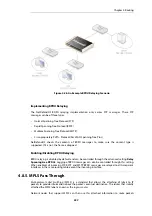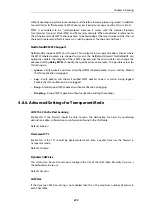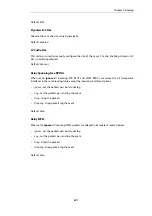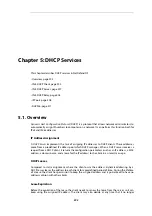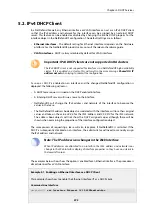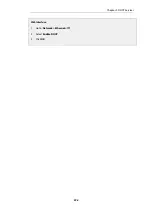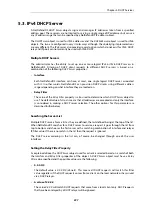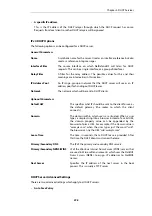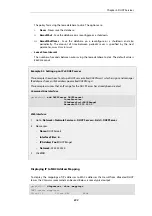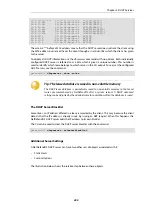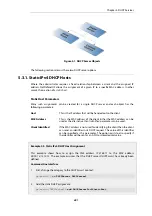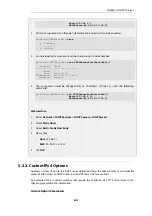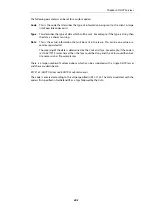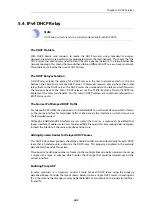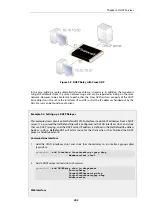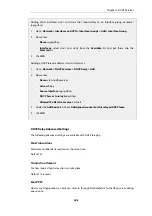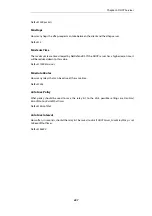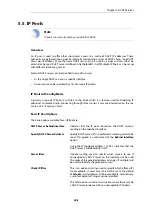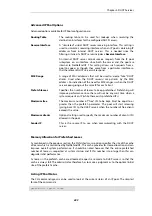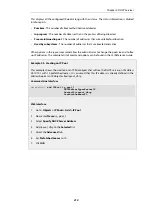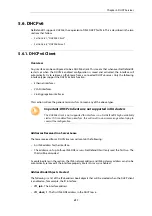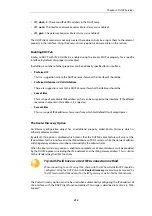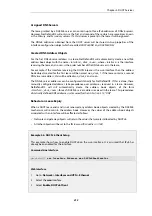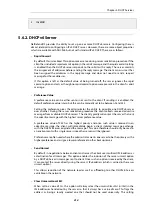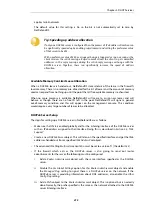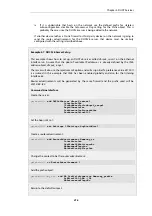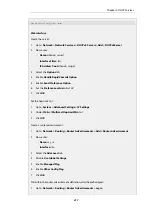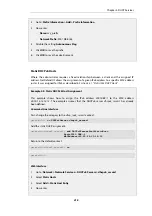
The following parameters can be set for a custom option:
Code
This is the code that describes the type of information being sent to the client. A large
list of possible codes exists.
Type
This describes the type of data which will be sent. For example, if the type is
String
then
the data is a character string.
Data
This is the actual information that will be sent in the lease. This can be one value or a
comma separated list.
The meaning of the data is determined by the
Code
and
Type
. For example, if the code is
set to
66
(TFTP server name) then the
Type
could be
String
and the
Data
would then be a
site name such as
tftp.example.com
.
There is a large number of custom options which can be associated with a single DHCP server
and these are described in:
RFC 2132 - DHCP Options and BOOTP Vendor Extensions
The code is entered according to the value specified in RFC 2132. The data associated with the
code is first specified in NetDefendOS as a
Type
followed by the
Data
.
Chapter 5: DHCP Services
403
Summary of Contents for NetDefendOS
Page 30: ...Figure 1 3 Packet Flow Schematic Part III Chapter 1 NetDefendOS Overview 30 ...
Page 32: ...Chapter 1 NetDefendOS Overview 32 ...
Page 144: ...Chapter 2 Management and Maintenance 144 ...
Page 284: ...Chapter 3 Fundamentals 284 ...
Page 392: ...Chapter 4 Routing 392 ...
Page 419: ... Host 2001 DB8 1 MAC 00 90 12 13 14 15 5 Click OK Chapter 5 DHCP Services 419 ...
Page 420: ...Chapter 5 DHCP Services 420 ...
Page 573: ...Chapter 6 Security Mechanisms 573 ...
Page 607: ...Chapter 7 Address Translation 607 ...
Page 666: ...Chapter 8 User Authentication 666 ...
Page 775: ...Chapter 9 VPN 775 ...
Page 819: ...Chapter 10 Traffic Management 819 ...
Page 842: ...Chapter 11 High Availability 842 ...
Page 866: ...Default Enabled Chapter 13 Advanced Settings 866 ...
Page 879: ...Chapter 13 Advanced Settings 879 ...

